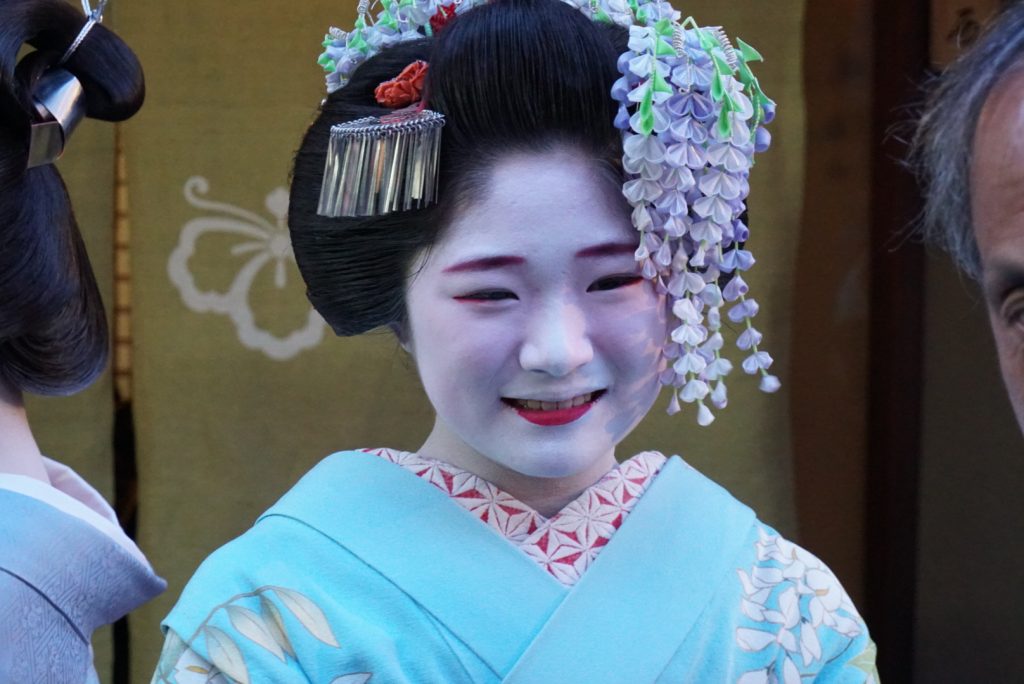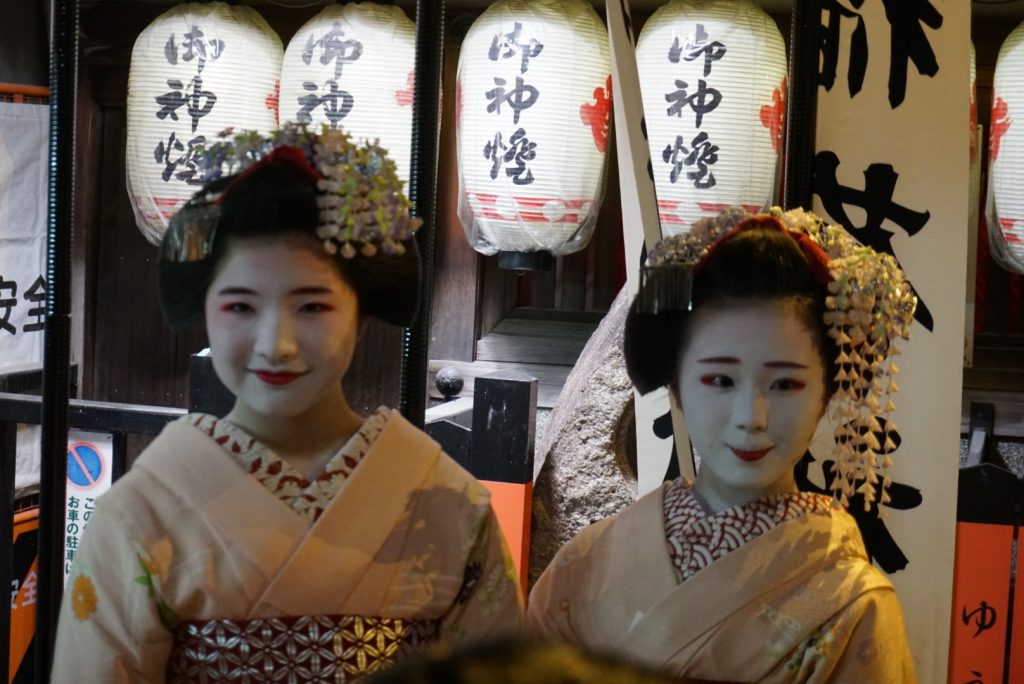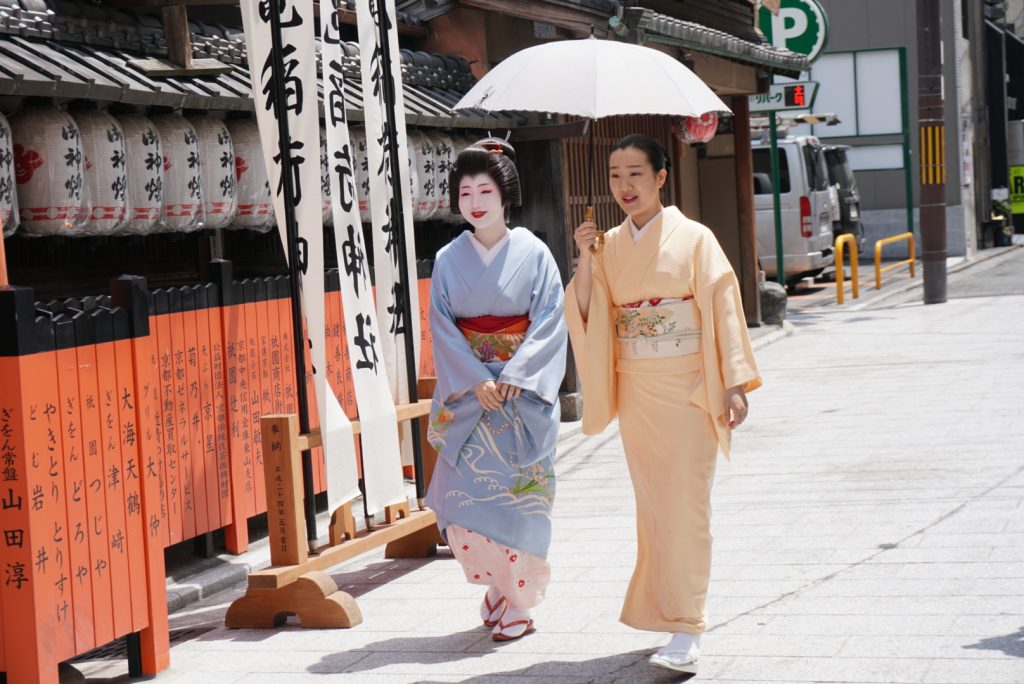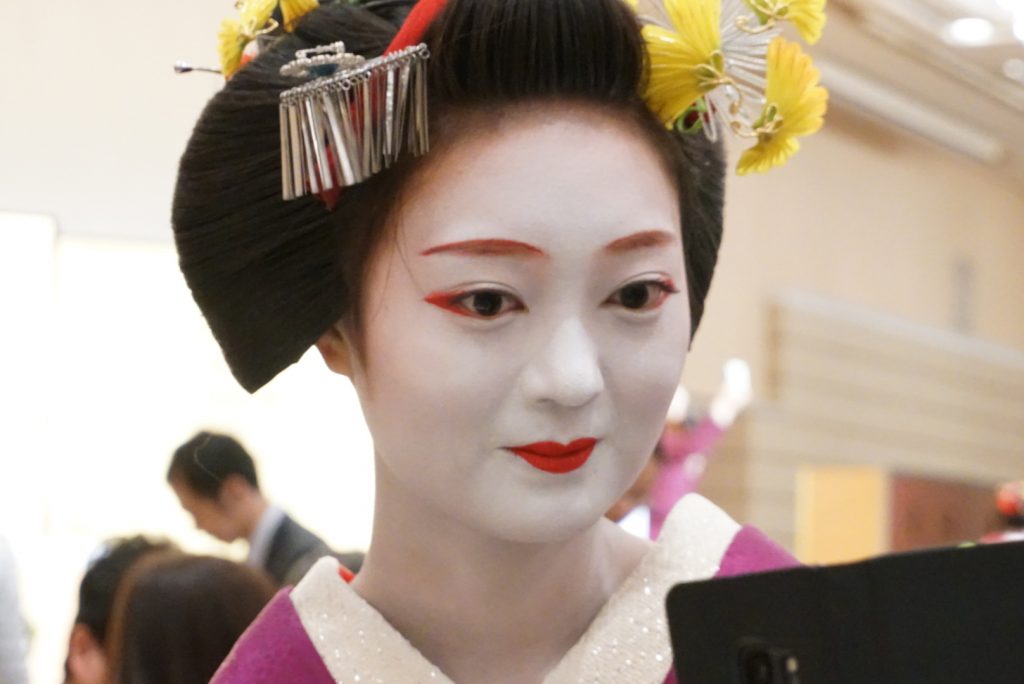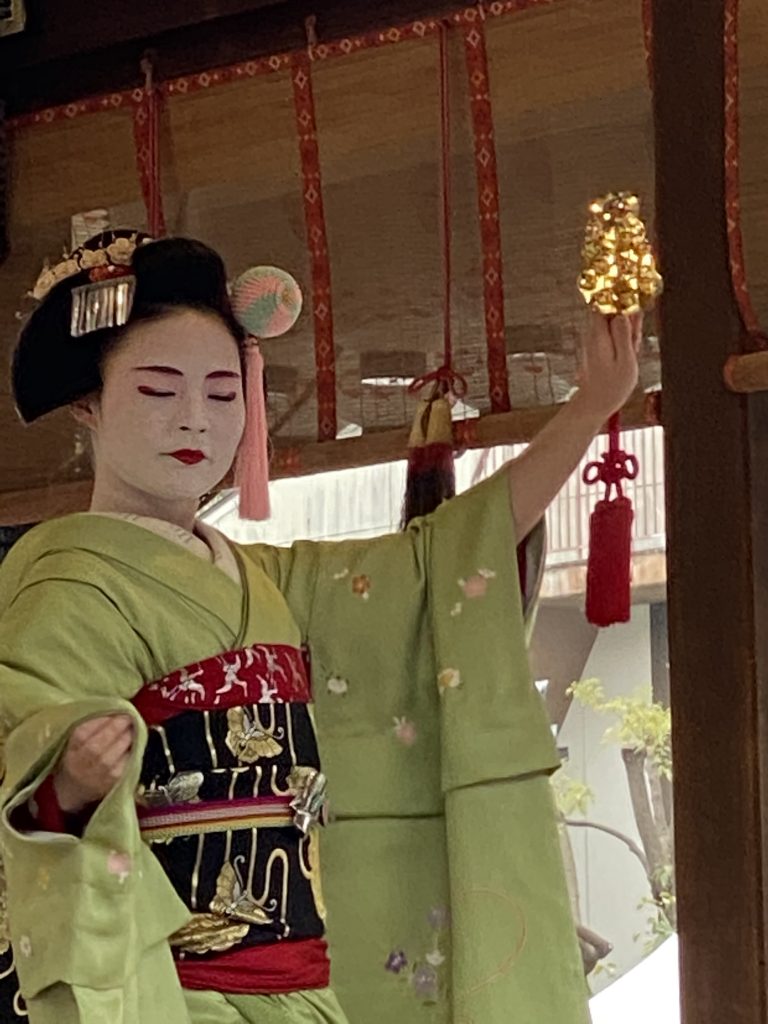Maiko and Geiko are the terms used in Kyoto and these meanings are same as Geisha.
They are female entertainers who perform traditional Japanese music and dances at exclusive parties.
Maiko are apprentice Geiko, most of them between the ages of 15 and 20.
There are about 50 Maiko working today in Kyoto’s Gion distrct.
The appearance of Maiko retains many of aspects of women’s fashion in Edo period(1603-1868). The large ornamental hairpins called “kanzashi” are modeled on seasonal flowers and changed every month.
Their kimono designs should also convey a sense of season: cherry blossoms in spring, irises or fireworks in summer, maple leaves in autumn, and so on. Wearing seasonally appropriate kimonos is a part of their jobs.
Their appearance is also designed to emphasize their youthfulness.
The unusually long sash that droops down at the back gives the wearer a petite impression.
And these 10-centimeter-high platform sandals are intended to make the wearer look clumsy and childlike when she walks.
Maiko makeup has also remained unchanged over the cunturies.
Maiko only use the these traditional makeup colors- white, red, and black. The white mask-like foundation suggests the appreciation of white skin that has existed since ancient times.
The red is is thought to add feminine appeal, while the black gives the face definition.
It’s the skillful combination of these three colors that creates the distinctive look of Maiko.
The world of Maiko may seem glamorous, but every Maiko must undergo rigorous training. They have lessons in singing, dancing, and playing instruments, as well as etiquette training.
Maiko also have to entertain their guests by pouring their drinks, chatting, and playing games. This means they have to have good conversation skills.
The origins of Maiko and Geiko date back about 400 years, when women who worked at chaya rest houses served refreshments to people visiting Gion Shrine, which is now called Yasaka Shrine.
In due course, these women began to dance and play the shamisen to entertain customers. They were the forerunners of today’s Maiko and Geiko.
Maiko are modern young girls who have chosen to keep alive a colorful aspect of traditional Kyoto.

